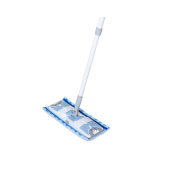Are you feeling overwhelmed by the mounting complexity and high costs associated with managing your suppliers?
As businesses become more interconnected, the pressure to optimize your supply chain and cut expenses can seem insurmountable. To make matters worse, the outdated methods many organizations still rely on (like labour-intensive manual procedures, redundant digital entries, and extensive form filling) not only slow down operations but also create ample room for human error.
But that’s where effective supplier management comes into play.
Supplier management is a systematic, enterprise-wide approach designed to track, evaluate, and improve your network of suppliers. A study conducted by the Hackett Group has revealed that nearly two-thirds (64%) of organizations regard effective supplier relationship management as major or critical for their operations. Furthermore, this emphasis on supplier management is not just a local trend, but a global phenomenon. A separate survey shows a high level of investment in supplier management solutions, with 81% of organizations based in Europe alone.
In this article, we will explore the multifaceted world of supplier management. Our goal is to equip you with valuable insights and actionable knowledge that will empower you to harness the potential of supplier relationship management effectively and achieve lasting success for your organization.
Here are the topics we will cover in this article:
- What are the benefits of effective supplier management?
- 5 key steps to follow for effective supplier management
- Digital transformation: the future of your supplier management framework
What are the benefits of effective supplier management?
Supplier management is a vital aspect of any business, as it directly impacts the quality of products and services delivered to customers. When you manage to implement an effective supplier management process, you will succeed in streamlining your operations, reducing costs, ensuring a consistent level of quality, and managing risks.
Picture a food processing plant that must adhere to strict regulations regarding food safety and hygiene. Effective supplier management helps ensure that ingredients, raw materials but also personal protective equipment (PPE) are sourced from reputable suppliers who meet the safety requirements. This helps minimize the risk of contamination, spoilage, or other issues that could pose a threat to public health and the company’s reputation.
All things considered, what are the main benefits of having an effective supplier management process in place?
- Enhance Supply Chain Responsiveness: Good supplier management helps your business adapt quickly to changes. For example, a restaurant suddenly facing a boom in takeaway orders can promptly identify new suppliers for food containers and delivery boxes, meeting emerging needs while keeping the business afloat.
- Unlock Significant Cost Reductions: Supplier management promotes operational efficiency, which directly translates to cost savings. A construction company might develop a closer collaboration with their PPE supplier. This will enable them to order effortlessly, save time, and ultimately, reduce their expenses.
- Mitigate Supply Chain Risks: Proper supplier management helps identify and assess supplier-related risks, allowing businesses to devise suitable strategies to mitigate these risks. For instance, if one supplier consistently delivers late or provides substandard goods, this risk can be detected early. The company can then take necessary actions such as seeking alternative suppliers or negotiating better service terms, avoiding potential disruptions to their operations.
- Stabilize Pricing: Through strategic relationships with suppliers, businesses can negotiate more favourable pricing terms. For example, a food processing plant might secure a long-term contract with a supplier, ensuring stable prices on must-have products over time regardless of market fluctuations.
- Streamline Your Supply Chain: Supplier management also offers the advantage of supply chain consolidation. An agricultural business might be purchasing workwear from different suppliers, but by consolidating these purchases with one supplier, they can simplify procurement and budgeting processes.
5 key steps to follow for effective supplier management
Choosing the correct partners is certainly an important first step in supplier management.
However, to ensure that your supply chain functions optimally, you need to follow a set plan that will guide you from identifying potential suppliers to establishing a robust and beneficial relationship with them.
Below are 5 vital steps, each playing a significant role in building and maintaining successful partnerships:
- Qualification: This step involves carefully assessing potential suppliers to ensure they’re capable of delivering the necessary goods or services to the standards you’ve set. One effective approach is implementing a scoring system that evaluates suppliers based on specific criteria such as product quality, reliability, financial stability, compliance with regulations, and track record. This scoring system enables you to objectively compare and rank potential suppliers, facilitating informed decision-making.
- Supplier onboarding: Once you’ve chosen a supplier, the next step is onboarding. This involves gathering all relevant information about the supplier and updating your internal systems to include them. If you’re a construction company that has just signed a contract with a new provider of PPE, you’d need to update your procurement and payment systems to include this new supplier and inform all relevant personnel.
- Supplier segmentation: In this step, you’ll classify your suppliers based on certain metrics, such as supply risk, total spend, and supply criticality. For instance, a manufacturing company might segment its suppliers of industrial cleaners into different categories based on the volume of spend and the criticality of these supplies to their operations.
- Collaboration: Building a strong relationship with your suppliers is key to achieving mutual benefits. Close collaboration can lead to improvements in processes, performance, and even innovation in products or services. For example, an agricultural business might collaborate with its supplier of workwear to develop a new, more durable material that meets the specific needs of its workers.
- Supplier performance management: Finally, it’s important to regularly evaluate your suppliers’ performance to ensure they’re meeting their contractual obligations. To evaluate supplier performance, you can start by establishing clear and measurable performance metrics. A key metric for you could be on-time delivery performance, which assesses how often suppliers meet delivery deadlines consistently. Additionally, for assessing quality, concrete metrics can include defect rates, product conformity, customer satisfaction ratings, and adherence to industry standards or certifications.
Digital transformation: the future of your supplier management framework
Digital transformation is revolutionizing the landscape of procurement, offering a multitude of supplier management tools and technologies to enhance efficiency and effectiveness.
For instance, supplier relationship management software (SRM) is a specific type of tool that focuses on fostering collaboration and communication between your business and your suppliers. This software can help you centralize communication, track supplier performance, and drive innovation through collaborative initiatives. For example, a company in the logistics industry might use SRM software to easily share shipment information, monitor delivery times, and collaborate on strategies to optimize transportation routes and reduce overall costs.
Another example would be using an e-procurement platform to automate the purchasing process, saving time and reducing manual errors. A company in the manufacturing industry might implement such a platform to automate the ordering of raw materials, manage supplier bids, and compare pricing across multiple suppliers, ensuring the best value and quality for their production process.
Supplier risk management tools can also be beneficial for identifying potential risks and vulnerabilities in the supply chain. For example, a business in the healthcare sector might use these tools to monitor supplier compliance with industry regulations, such as adherence to Good Manufacturing Practices (GMP) or data privacy laws, minimizing the risk of costly fines or reputational damage.

Common KPIs for supplier performance management include cost, quality, delivery times, and adherence to regulations.
Conclusion
In conclusion, mastering supplier management is essential for businesses looking to improve their supply chain, reduce costs, and drive innovation.
With the right approach and the right supplier management tools, you’ll be well-positioned to navigate the complexities of today’s business landscape and achieve long-term success.
Begin by assessing your current supplier management strategy, identifying areas for improvement, and implementing the best practices outlined in this guide. Your business, your suppliers, and your bottom line will all benefit from your efforts leading to increased supply chain responsiveness, cost reductions, effective risk management, stable pricing, and a streamlined supply chain.
If you’re seeking to enjoy these benefits in your procurement, we also recommend taking a look at a marketplace like Droppe.
Droppe is Europe’s most comprehensive industrial catalogue where you can easily source and receive custom quotes for over 150,000+ products and compare 100+ European suppliers based on their product selection, price, delivery time, and much more.
So, rather than spending countless hours negotiating with different suppliers, you now have their selections and offers in one single place. Plus, there are no geographical limitations, so your personal supplier pool will expand throughout Europe.
Once you’ve found the right suppliers, it will only take you a moment to proceed to purchase products from vetted suppliers across Europe in one single invoice.
Droppe takes care of all the details, from payment to order handling, so you can focus on what really matters – keeping your business flowing without any hiccups.
Whether you’re looking for PPE, food production supplies, industrial cleaners, and much more, you can give Droppe a try today and see how easy it can be to source Europe’s most-trusted suppliers.


















